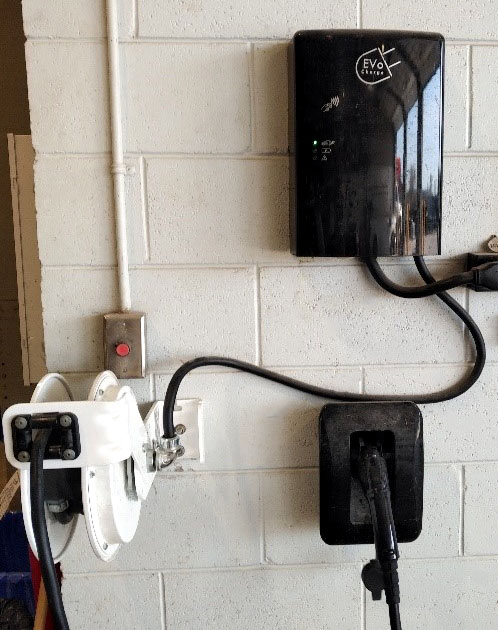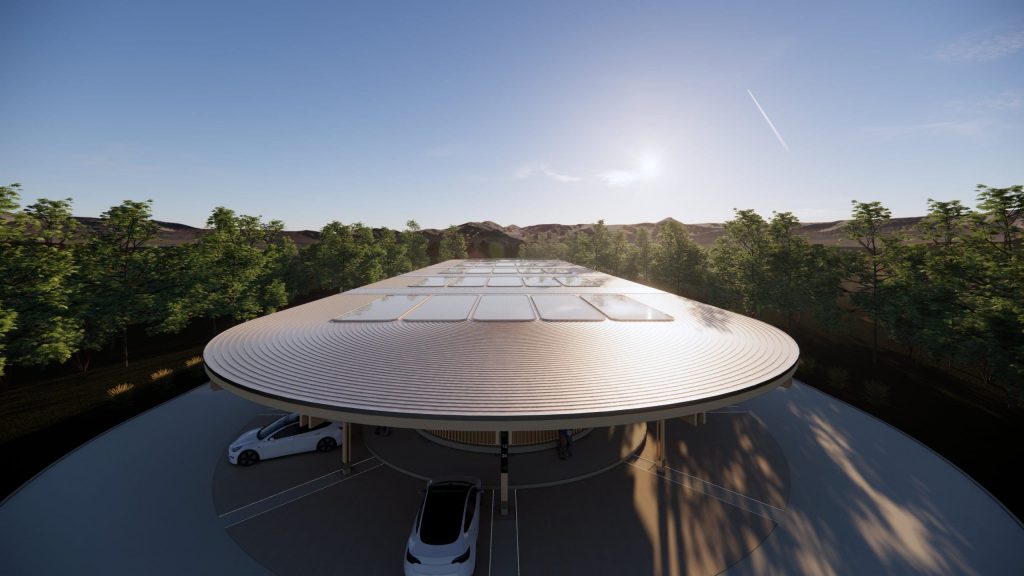In 2015, NOTL Hydro engaged in a project with Tech Mahindra to test the viability of managing the charging of electric vehicles (EVs) to protect the local transformers. Under this project, which was funded by the Government of Ontario Smart Grid Fund, some NOTL Hydro customers, all electrically supplied from the same transformer, were lent an electric vehicle while Tech Mahindra staff developed the software to integrate data from the electric vehicle, the charging station located in the customer’s house and the transformer.
The project was attempting to create one solution for a very real issue: what needs to be done to local grids to ensure electric vehicle charging does not overwhelm the transformer feeding your house. These transformers are in the green boxes if you have an underground service or the grey “cans” on the poles in your neighbourhood. A typical house can have a demand that peaks at around 3-4 kW. Knowing this, electric utilities will often connect 8-12 houses to a 50 kVA transformer. However, a level 2 electric vehicle charger that uses 240 volts and can be easily installed in a garage by a licensed electrician, peaks at around 7 kW. It would not take too many installed level 2 chargers to overwhelm a 50 kVA transformer.
There are currently three levels of EV chargers. A level 1 charger can be plugged into a standard wall outlet. It peaks at around 1 kW of demand. For a fully electric vehicle a level 1 charger could take well over 12 hours to charge and is usually not considered sufficient. A level 1 charger is usually sufficient for a hybrid plug-in as those hold a much smaller charge. Most EV owners will get a level 2 charger installed. See the photo of the level 2 charger at NOTL Hydro (below). These use 240 volts like your oven and dryer and can fully charge an EV in 3-7 hours (overnight). Please have a Licensed Electrical Contractor do the installation. Level 3 (or DC Fast Chargers) can be found at some commercial EV charging stations. These use 480 volts and can charge an EV in 30 minutes. Not every EV can handle a level 3 charger so check first. It is not practical to install a level 3 charger in your home. It is possible to develop even faster chargers. The current limitation to this is the ability of the battery to accept the power of this fast charge. I am sure that will change with time.

In the end, the approach we were trying with the Tech Mahindra project was unsuccessful. The stumbling block turned out to be the communications technology between the EV, the charging station and the transformer. As the internet of things (IoT) technology has significantly developed since then and continues to do so, this may be less of an issue in the future.
There are other solutions to the challenges of electric vehicle charging.
The first, and most practical, is to increase the size of the transformer. NOTL Hydro is fortunate in that we have been using 100 kVA transformers for many years so do not have too many 50 kVA transformers in the system. Even so, with smart meters we are able to periodically check the loading on these transformers and have upgraded them when required. It is even more helpful if a customer lets us know they will be installing a level 2 transformer or, in the case of some commercial establishments, a level 3 transformer. We have upgraded several transformers as a result of these alerts.
Second, the Government of Ontario is planning a new electricity pricing scheme which will have much lower prices at night and much higher prices at peak times. This could encourage EV owners to charge their EVs at night when it will cost them much less. The focus of the Government of Ontario is on spreading the use of electricity more evenly across the day to reduce the demand on generation at peak times. However, it would also work to spread out the demand on the local transformers.
Third, various governments are making more funding available to create the infrastructure necessary to support widespread use of electric vehicles. This is primarily for the installation of electric vehicle charging stations in as many locations as possible so that future automobile purchasers will not shy from purchasing an electric vehicle out of worry that they will not be able to get it charged when on the road. If, as is currently believed, transportation will become largely electric in the near future, then the impact of electric vehicle charging will continue to grow and in ways we cannot currently imagine. It may be that in the future we will have service stations fully devoted to electric vehicle charging with all the traditional amenities. It will be finding a gas fueling station that may be the challenge.

A few things I am sure of: when the changes come, in whatever form they come, they will come faster than we expect and in ways we do not fully anticipate. And, however and whenever these changes come, NOTL Hydro will be prepared to support its customers in adapting to these changes.